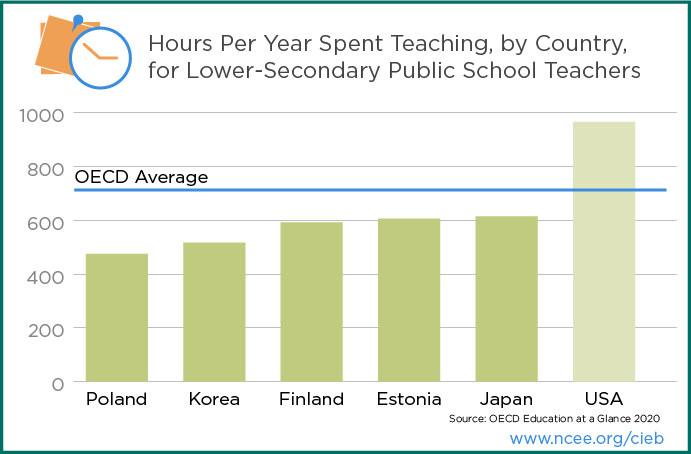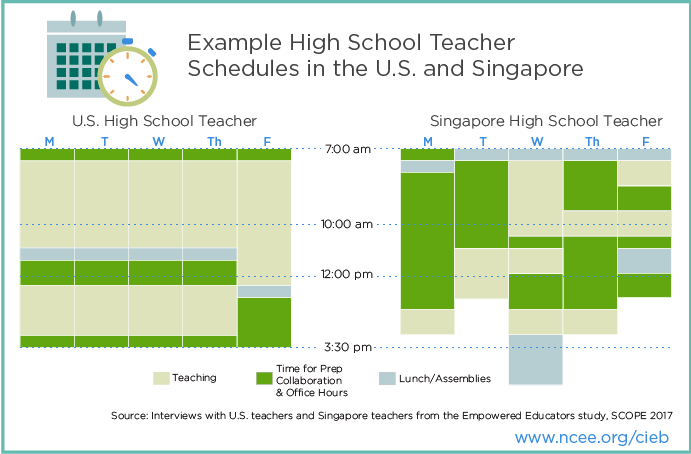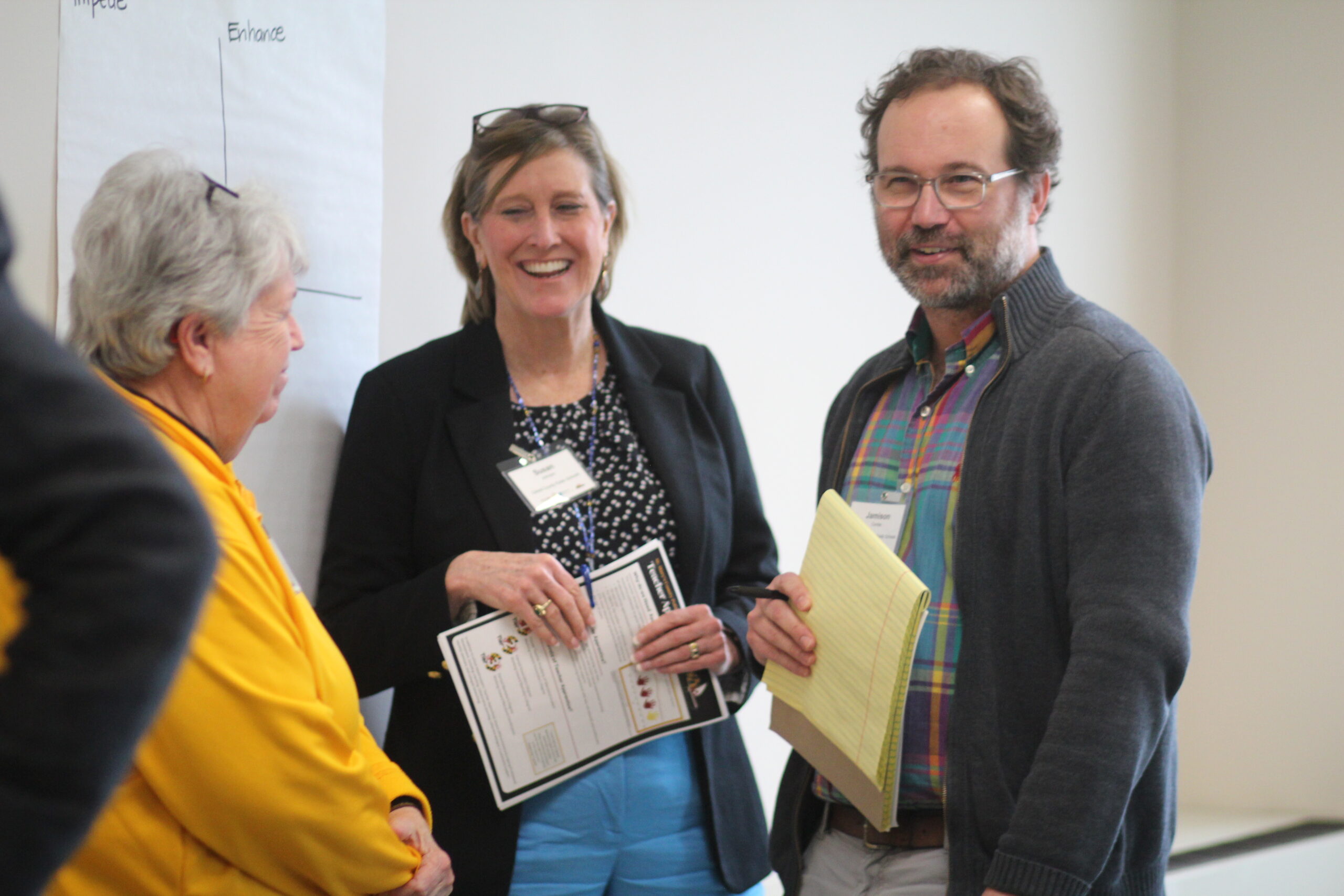
By Jennifer Craw
Top-performing education systems have long understood the value of providing teachers with time in their schedules outside of teaching—time to prepare lessons, observe and collaborate with their peers, conduct research to improve practice, and build relationships with students and families. The data in the chart above show that teachers in top-performing education systems like Poland, South Korea, Finland, Estonia, and Japan spent far less time in front of classes than their US peers did in 2019. The chart below compares a U.S. high school teacher’s schedule with that of a high school teacher in Singapore. The Singapore teacher’s schedule is notably more variable, and includes much more time for professional learning, collaboration, and preparation. The U.S. teacher spends most of his or her time in front of a class of students, with little time for non-teaching activities that would help improve his or her craft.

These data were collected before coronavirus forced many schools to shift to distance learning. Since then, many U.S. school districts have started rethinking how teachers’ time is allocated to accommodate the increased workloads required to prepare and deliver lessons in an unfamiliar, online environment and to take advantage of the new flexibility afforded in that environment. As top-performing education systems have proven, less teaching time for teachers does not mean less learning time for students. But it does require adjusting the way schools are staffed so that teachers have the chance to do the other kinds of work—collaboration with peers, lesson preparation, research, and relationship building with students—that can help them improve their craft and reduce the chances of teacher burnout. With increased funding available through ESSER, U.S. districts have the opportunity to think more creatively about staffing. Read more about how new approaches to teachers’ schedules could positively impact U.S. education in this article by NCEE’s Ann Borthwick.




